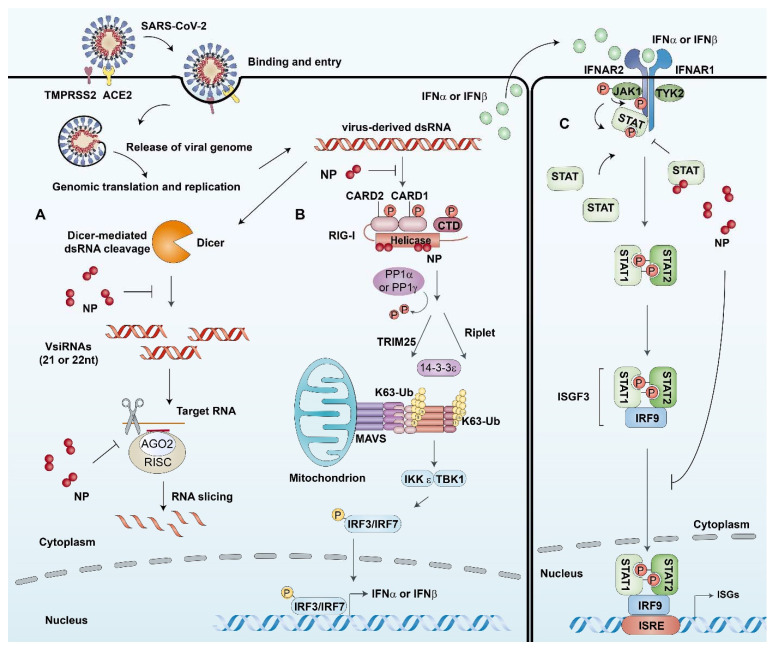Figure 2.
The host cell’s innate immune processes involving the N protein. (A) N proteins act as viral suppressors of RNA interference (RNAi) in host cells. In the initiation step, the dsRNA in infected cells could be sequestrated by N proteins, which prevent the recognition and cleavage of viral dsRNA by Dicer. In addition, the N protein can suppress siRNA-induced RNA degradation in the effector step. (B) N proteins interact with RIG-I and repress RIG-mediated IFN-β production. N proteins can interact with RIG-I through the helicase domain of DExD/H-box helicases, which has ATPase activity and plays an important role in the binding of immunostimulatory RNAs. Therefore, SARS-CoV-2 N proteins suppress the IFN-β response by targeting the initial step of IFN activation. (C) N proteins antagonize type I IFN signaling by suppressing phosphorylation and nuclear translocation of signal transducer and activator of transcription 1 and 2 (STAT1 and STAT2). The binding of secreted type I IFN to their receptors on neighboring cells can trigger phosphorylation of pre-associated Janus kinase 1 (JAK1) and tyrosine kinase 2 (TYK2), which in turn phosphorylates the receptors. This leads to the recruitment and phosphorylation of STAT1 and 2. In SARS-CoV-2 infected cells, N proteins can interfere with the interactions of STAT1 with JAK1 and STAT2 with TYK2 by competitively binding to STAT1/STAT2 and in turn inhibit their phosphorylation. Therefore, N proteins further reduce the subsequent nuclear translocation of the IFN-stimulated gene factor 3 (ISGF3) transcription complex and inhibiting the expression of IFN stimulated genes (ISGs).

